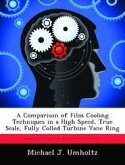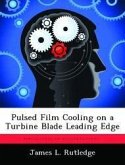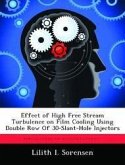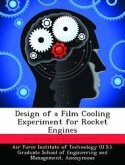This experiment explored the ability of a row of cylindrical dimples' vortex shedding to entrain the cooling film in the boundary layer for longer distances, thus enhancing cooling on a turbine leading edge model. The experiment utilized a semi-cylindrical leading edge followed by an after body with straight surfaces. A foam leading edge drilled with cooling holes allowed for a determination of adiabatic film effectiveness using an Infrared Thermography (IR) technique to measure surface temperature distributions. Two test models were utilized, one with a row of seven dimples placed upstream from the cooling-hole, while the other model had a row of seven downstream. Five blowing ratios were tested: 0.5, 0.75, 1.0, 1.25, and 1.5. It was observed that the dimples introduced disturbances in the boundary layer that encouraged vertical and lateral diffusion of the cooling film that caused reattachment of coolant jet liftoff. Dimples placed upstream of the cooling hole improved spanwise averaged adiabatic film cooling effectiveness by up to 60% for far downstream locations. Dimples placed downstream of the cooling hole enhanced ?? up to 30% for far downstream locations.
Hinweis: Dieser Artikel kann nur an eine deutsche Lieferadresse ausgeliefert werden.
Hinweis: Dieser Artikel kann nur an eine deutsche Lieferadresse ausgeliefert werden.








